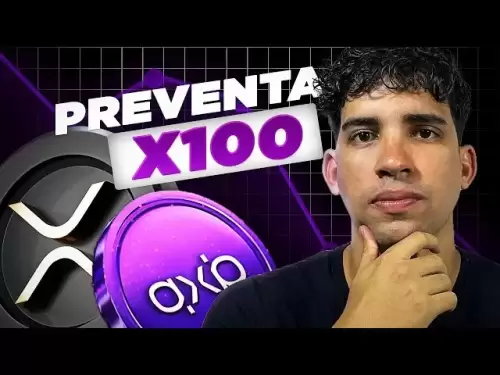-
 Bitcoin
Bitcoin $118100
0.44% -
 Ethereum
Ethereum $3765
5.84% -
 XRP
XRP $3.498
3.12% -
 Tether USDt
Tether USDt $1.000
0.00% -
 BNB
BNB $753.2
3.41% -
 Solana
Solana $181.7
3.58% -
 USDC
USDC $0.9999
0.01% -
 Dogecoin
Dogecoin $0.2704
12.75% -
 Cardano
Cardano $0.8684
5.85% -
 TRON
TRON $0.3151
-0.86% -
 Hyperliquid
Hyperliquid $46.06
4.51% -
 Stellar
Stellar $0.4695
2.48% -
 Sui
Sui $3.910
3.18% -
 Chainlink
Chainlink $19.36
6.65% -
 Hedera
Hedera $0.2750
3.99% -
 Bitcoin Cash
Bitcoin Cash $544.6
6.31% -
 Avalanche
Avalanche $25.12
3.69% -
 Shiba Inu
Shiba Inu $0.00001559
5.40% -
 Litecoin
Litecoin $116.8
5.10% -
 UNUS SED LEO
UNUS SED LEO $8.991
0.05% -
 Toncoin
Toncoin $3.283
2.79% -
 Polkadot
Polkadot $4.509
3.97% -
 Uniswap
Uniswap $10.67
6.58% -
 Ethena USDe
Ethena USDe $1.001
-0.01% -
 Monero
Monero $323.2
0.48% -
 Pepe
Pepe $0.00001410
6.37% -
 Bitget Token
Bitget Token $4.964
1.93% -
 Dai
Dai $0.9998
-0.01% -
 Aave
Aave $326.2
3.85% -
 Bittensor
Bittensor $421.8
2.46%
Advantages of an ETH ETF over a Grayscale ETHE
ETH ETFs offer greater liquidity, lower fees, and stronger regulatory oversight compared to Grayscale ETHE, making them a more efficient and transparent investment option.
Jul 21, 2025 at 04:15 am
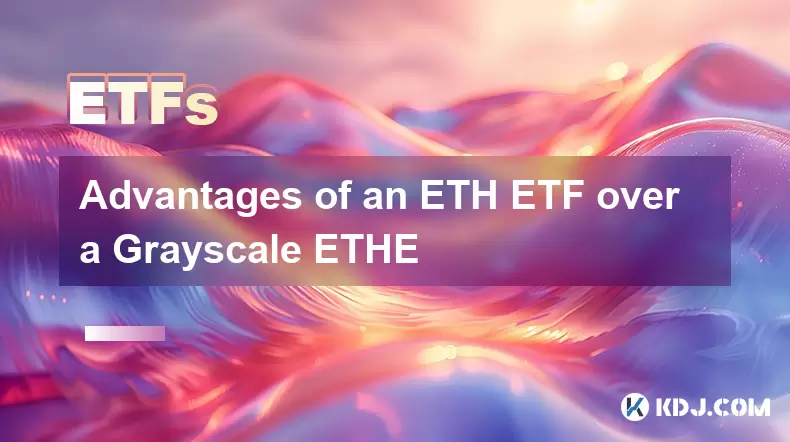
Understanding the ETH ETF and Grayscale ETHE
An ETH ETF (Ethereum Exchange-Traded Fund) is a financial product that allows investors to gain exposure to Ethereum without directly owning the cryptocurrency. It is traded on traditional stock exchanges and reflects the price of Ethereum through regulated financial instruments. On the other hand, Grayscale ETHE is a private investment vehicle that offers Ethereum exposure but operates differently from a traditional ETF.
The key distinction lies in their regulatory status and structure. An ETH ETF is typically subject to SEC approval and must meet strict reporting and transparency standards. In contrast, Grayscale ETHE is structured as a private trust, which does not have the same liquidity or redemption mechanisms as an ETF.
ETH ETFs are considered more transparent and cost-effective compared to Grayscale ETHE.
Liquidity and Market Accessibility
One of the most significant advantages of an ETH ETF is its superior liquidity. Since it trades on major stock exchanges like the NYSE or Nasdaq, investors can buy and sell shares throughout the trading day at market prices. This provides real-time pricing and ease of execution, especially during volatile market conditions.
Grayscale ETHE also trades on public markets, but it often trades at a premium or discount to its net asset value (NAV), which can lead to inefficiencies for investors. Unlike ETFs, ETHE does not allow for direct redemptions, meaning there's no arbitrage mechanism to keep its price aligned with the underlying Ethereum value.
- Investors can trade ETF shares freely during market hours
- ETHE lacks intraday liquidity and redemption options
- ETFs offer tighter spreads and better price discovery
Regulatory Oversight and Transparency
An ETH ETF comes under stricter regulatory oversight, which enhances investor confidence. These funds are required to publish daily holdings, undergo regular audits, and comply with SEC guidelines. This level of transparency ensures that investors know exactly what they're investing in and how the fund is managed.
In comparison, Grayscale ETHE has historically been less transparent in its operations. While it does disclose some information, it does not provide the same level of real-time insight into its holdings or fee structure. The lack of redemption mechanisms also means that the trust can deviate significantly from Ethereum’s spot price.
ETFs offer daily disclosures and regulatory compliance, making them more trustworthy than ETHE.
Cost Structure and Expense Ratios
Cost efficiency is another area where ETH ETFs outperform Grayscale ETHE. Most proposed ETH ETFs have announced management fees below 0.5%, which is competitive with other crypto ETFs and traditional index funds. Lower fees translate to higher long-term returns for investors.
Grayscale ETHE currently charges a 2% annual management fee, which is significantly higher than what ETF providers are offering. Over time, this fee difference can erode investor returns, especially for long-term holders.
- ETFs generally charge lower expense ratios
- ETHE's 2% fee impacts long-term performance
- Lower costs make ETFs more attractive for retail and institutional investors
Tax Efficiency and Investor Protection
From a tax perspective, ETH ETFs are likely to be more efficient than Grayscale ETHE. ETF structures are designed to minimize capital gains distributions through in-kind creation and redemption processes. This allows investors to defer taxes until they sell their shares.
Grayscale ETHE, being a grantor trust, may expose investors to unexpected tax events. Holders could face phantom income due to the trust's structure, even if they haven’t sold any shares. Additionally, the lack of redemption features limits investor control over when and how gains are realized.
ETFs offer better tax treatment and stronger investor protections than ETHE.
Frequently Asked Questions
Q1: Can I convert my Grayscale ETHE into an ETH ETF once one launches?
There is no direct conversion mechanism between ETHE and an ETH ETF. However, investors can sell their ETHE shares and purchase shares of an ETH ETF on the open market if one becomes available.
Q2: Why do some investors still prefer Grayscale ETHE despite its disadvantages?
Some investors may prefer ETHE due to familiarity, limited access to new ETF products, or because it was one of the earliest Ethereum investment vehicles available before the introduction of ETFs.
Q3: Will an ETH ETF hold actual Ethereum or use derivatives?
Most proposed ETH ETFs plan to hold physical Ethereum rather than futures contracts or synthetic instruments. This aligns the ETF's value closely with Ethereum's spot price.
Q4: Are ETFs safer than ETHE?
While both carry risks associated with Ethereum's price volatility, ETFs are generally considered safer due to their regulatory oversight, transparency, and lower fees.
Disclaimer:info@kdj.com
The information provided is not trading advice. kdj.com does not assume any responsibility for any investments made based on the information provided in this article. Cryptocurrencies are highly volatile and it is highly recommended that you invest with caution after thorough research!
If you believe that the content used on this website infringes your copyright, please contact us immediately (info@kdj.com) and we will delete it promptly.
- Dogecoin & Meme Coins in 2025: Hype or Hyper-Growth?
- 2025-07-21 08:30:12
- China, Brain Tech, and Neuralink: A Race to the Future?
- 2025-07-21 09:09:37
- Binance Futures: Bitcoin Shorting Imminent? A Contrarian's Take
- 2025-07-21 09:10:25
- XRP Price Spike: Is This the Cryptocurrency's Big Breakout Moment?
- 2025-07-21 09:15:12
- Meme Coins with 10x Potential: Presale Mode and the Next Big Thing
- 2025-07-21 08:30:12
- Shiba Inu's Whale Haul: SHIB Primed for a Pump?
- 2025-07-21 06:50:12
Related knowledge
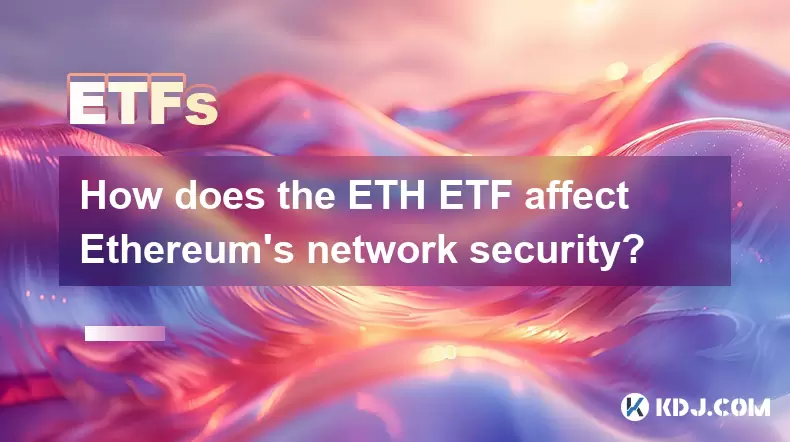
How does the ETH ETF affect Ethereum's network security?
Jul 17,2025 at 01:29pm
Understanding the ETH ETF ConceptAn Ethereum Exchange-Traded Fund (ETH ETF) is a financial product that allows investors to gain exposure to Ethereum ...
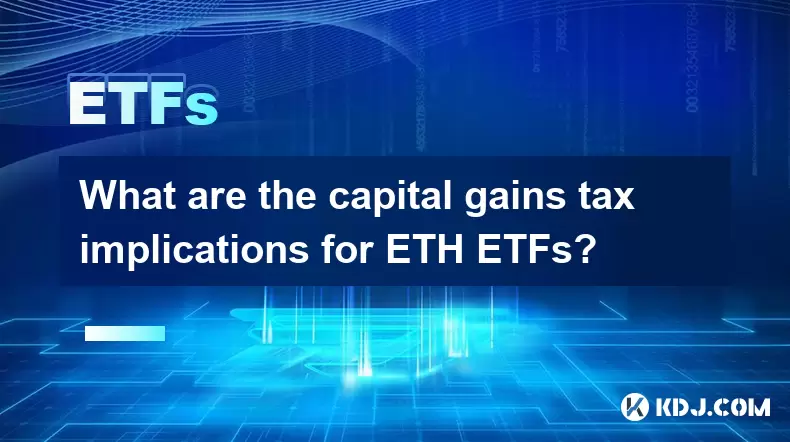
What are the capital gains tax implications for ETH ETFs?
Jul 18,2025 at 08:00am
Understanding Capital Gains Tax in Cryptocurrency InvestmentsCapital gains tax is a tax imposed on the profit realized from the sale of an asset that ...
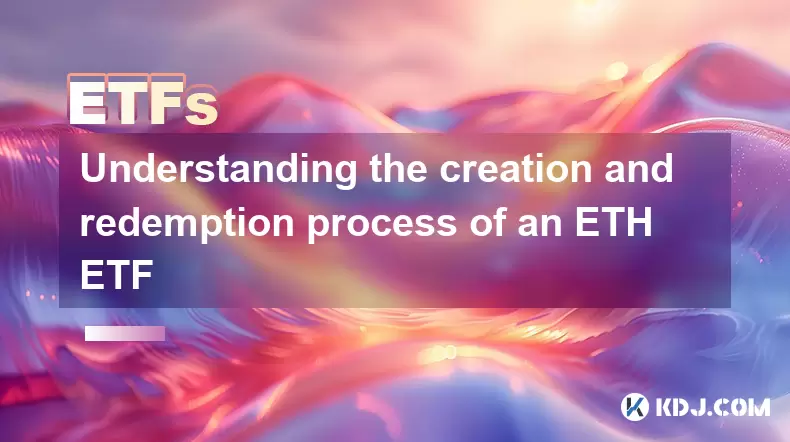
Understanding the creation and redemption process of an ETH ETF
Jul 19,2025 at 07:36am
What is an ETH ETF?An ETH ETF (Ethereum Exchange-Traded Fund) is a financial product designed to track the price of Ethereum without requiring investo...

How to analyze which ETH ETF is the best choice
Jul 19,2025 at 05:01pm
Understanding ETH ETFs and Their RelevanceEthereum Exchange-Traded Funds (ETFs) have emerged as a popular investment vehicle for those seeking exposur...

What are the liquidity risks for an ETH ETF?
Jul 21,2025 at 03:35am
Understanding Liquidity in the Context of ETH ETFsLiquidity refers to how easily an asset can be converted into cash without significantly affecting i...
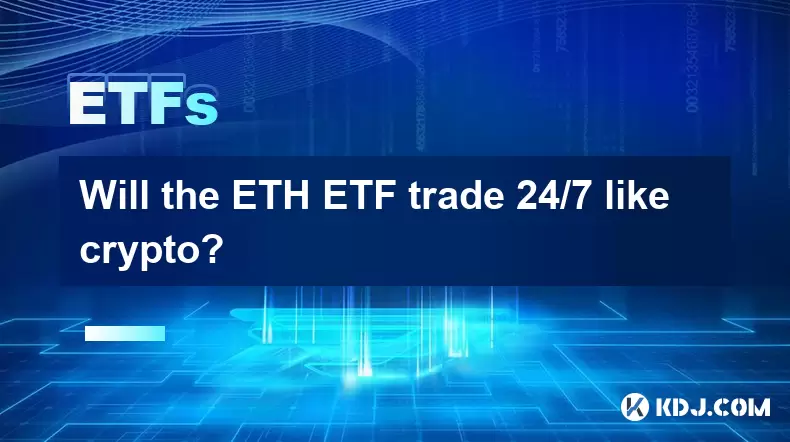
Will the ETH ETF trade 24/7 like crypto?
Jul 18,2025 at 10:00am
Understanding the ETH ETF and Its Trading HoursThe Ethereum Exchange-Traded Fund (ETH ETF) is a financial product that allows investors to gain exposu...

How does the ETH ETF affect Ethereum's network security?
Jul 17,2025 at 01:29pm
Understanding the ETH ETF ConceptAn Ethereum Exchange-Traded Fund (ETH ETF) is a financial product that allows investors to gain exposure to Ethereum ...

What are the capital gains tax implications for ETH ETFs?
Jul 18,2025 at 08:00am
Understanding Capital Gains Tax in Cryptocurrency InvestmentsCapital gains tax is a tax imposed on the profit realized from the sale of an asset that ...

Understanding the creation and redemption process of an ETH ETF
Jul 19,2025 at 07:36am
What is an ETH ETF?An ETH ETF (Ethereum Exchange-Traded Fund) is a financial product designed to track the price of Ethereum without requiring investo...

How to analyze which ETH ETF is the best choice
Jul 19,2025 at 05:01pm
Understanding ETH ETFs and Their RelevanceEthereum Exchange-Traded Funds (ETFs) have emerged as a popular investment vehicle for those seeking exposur...

What are the liquidity risks for an ETH ETF?
Jul 21,2025 at 03:35am
Understanding Liquidity in the Context of ETH ETFsLiquidity refers to how easily an asset can be converted into cash without significantly affecting i...

Will the ETH ETF trade 24/7 like crypto?
Jul 18,2025 at 10:00am
Understanding the ETH ETF and Its Trading HoursThe Ethereum Exchange-Traded Fund (ETH ETF) is a financial product that allows investors to gain exposu...
See all articles


























